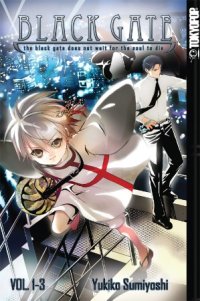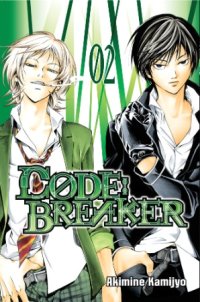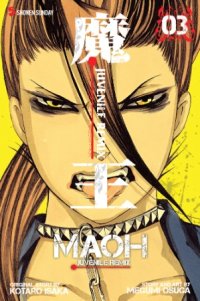RIGHT TURN ONLY!!
The Arisa Code
by Carlo Santos,

STAR OF THE (SAN FRANCISCO) GIANTS

Vol. 2010
(by Brian Sabean and Bruce Bochy, San Francisco Baseball Associates, $98.6 million)
Tim Lincecum is a promising young pitcher who dreams of baseball stardom. Armed with a unique pitching motion taught to him by his father, he is drafted by the San Francisco Giants in hopes of rejuvenating a franchise wracked by the ego and scandals of its former star player. In one magical season, Lincecum is joined by a squad of misfits and castoffs—Matt Cain, Buster Posey, Pat Burrell, Cody Ross, and the bearded madness of Brian Wilson—as the Giants embark upon an unlikely quest for greatness. Can they power past their division rivals from San Diego, as well as the reigning league-champion Philadelphia Phillies, to make it to the pinnacle of American baseball: the World Series?
Okay, okay, now for some real reviews...
ARISA

Vol. 1
(by Natsumi Ando, Del Rey, $10.99)
FROM THE BACK COVER:
"Tsubasa thinks that her pretty and popular twin sister, Arisa, has the perfect life. Everyone at school loves Arisa—unlike the hot-tempered Tsubasa, whose nickname is the 'Demon Princess.' But when Arisa attempts suicide, Tsubasa learns that her seemingly perfect sister has been keeping some dark secrets. Now Tsubasa is going undercover at school—disguised as Arisa—in search of the truth. But will Arisa's secrets shatter Tsubasa's life, too?"
EVIDENCE FOR:
The best thing about this series? It has nothing to do with hapless schoolgirls trying to choose between two dreamy guys with different hair colors! Talk about a gulping breath of fresh air. If anything, Arisa is a shoujo-styled Naoki Urasawa thriller, built upon layers of addictive mystery but set in a school environment that hits frighteningly close to home. Volume 1 alone is full of shocking elements that defy expectations, including suicide attempts, a schoolroom conspiracy, and creepy cult behavior worthy of the "Friend" organization. Natsumi Ando is also masterful in unveiling each plot point bit by bit, with careful pacing that offers up just enough information to keep readers hooked, as well as dramatic reveals perfectly positioned behind each page turn. The numerous characters, too—usually the stumbling point of a multi-threaded mystery plot—all have distinct viewpoints and relationships will keep everyone guessing. Holding it all together is Ando's confident artwork, now even more refined and well-spaced than her already excellent work on Kitchen Princess. The panels that shift and stretch, the dramatic framing, the expert timing ... Basically, if the cover image made you think of dumb, goopy romance junk, prepare to be totally WRONG.
EVIDENCE AGAINST:
Whoa, whoa, whoa. Back up just one second. How can anyone sing the praises of a series that loads up with clichés and plot contrivances before it even gets past Chapter 1? Why does it have to be twin sisters (with the predictable naughty/nice split), especially since the real Arisa drops out of the story with a bedridden coma after about 50 pages? (And there's another one: the bedridden coma trick.) Why were the two of them separated for three years, which just seems like a bad idea when raising twins? And how does Tsubasa's school not notice when she goes absent and attends Arisa's classes in order to solve the mystery? For all its carefully crafted suspense, it's surprising just how many plot holes have been created for the sake of convenience. In addition, Ando's character designs and linework lack an individual flair, instead hewing close to the generic "Nakayoshi house style." If it's hard to put names to faces in this first volume, well, that's just the way they're drawn, unfortunately.
FINAL VERDICT:
You know what ... "shoujo version of Naoki Urasawa" is really all I need to say to sell this. Also, A-. Now go get it.
BLACK GATE

Vols. 1-3 Omnibus
(by Yukiko Sumiyoshi, Tokyopop, $19.99)
FROM THE BACK COVER:
"In this world there exist spiritual pathways called Gates that draw in the souls of the departed and move them to a new realm of existence. However, at times, the Black Gate does not wait for death ... but instead forcefully sucks out the souls from living humans!
Senju is a 'Mitedamashi,' an agent with the power to summon or seal Gates, and save people's souls. He is guardian to Hijiri, a boy whose life he once saved. After Hijiri discovers his own hidden powers, he begins a journey of self-discovery where the distant past comes back to haunt him and his choices determine life or death, not only for those he cares about, but the whole world!"
EVIDENCE FOR:
At its heart, Black Gate has a lot of deep thoughts—thoughts about the value of life and death, about the bond between mentor and student, about what it means to live by one's ideals. What starts out as a typical monster-of-the-week concept blossoms into genuine drama, especially as the back story is filled out in Volume 1 and later on when the final act kicks in. Hearts will melt for the warm, brotherly relationship between Senju and Hijiri, but they'll also break when a grown-up Hijiri faces betrayals he could never have imagined. In between these extremes lies a grand, up-and-down emotional ride, where the bonds of friendship and family take many unexpected turns. The series' philosophical side has its moments too, with the characters often being challenged to choose between selfish comfort or sorrowful sacrifice. Of course, for some readers it might not matter either way, as long as the characters are attractive—and between the young boyish types, the level-headed taskmasters, and wild rebels, there's plenty of bishounen to go around. The fancy spirit-world sorcery also scores pretty high on the visual effects scale, so there's plenty to keep one's eyes glued to the page.
EVIDENCE AGAINST:
The "deep thoughts" of Black Gate are apparently so deep that they cannot be accessed by any sensible chain of logic. The series starts out promisingly enough, building up the relationship between Senju and Hijiri, but a cascade of narrative missteps ends up driving it into the ground. First there's the time-skip, which would have been just fine for advancing the plot ... except that it also brings in a whole new set of characters, with convoluted connections and mixed motives that take getting used to. Then, just as soon as they're all settled in, a dramatic turnaround happens—except that anyone who knows how good-versus-evil adventures work can probably see the turnaround coming. As the final battle approaches, common sense goes right out the window as open plot threads fail to close up, dramatic showdowns fizzle out, and the complex metaphysics of the series is replaced with vague hand-waving. Ambiguous dialogue and poorly laid out action scenes don't make it any easier. And here's the biggest disappointment: the big deal in Volume 1 was Hijiri's powers awakening, yet the grand finale doesn't hinge on those powers, but on a totally cheap deus ex machina. Complete failure of story right there.
FINAL VERDICT:
It's one thing to have a good idea. And to build up that idea into a complex, generations-spanning story. But when it all crumbles into a nonsenical epic finale, lacking any feel of epicness ... that's what C- grades are for.
CODE:BREAKER

Vol. 2
(by Akimine Kamijyo, Del Rey, $10.99)
FROM THE BACK COVER:
"As Sakura attempts to keep Rei from killing people, they are joined on a mission by Toki, another Code:Breaker. But under Toki's affable exterior lies the heart of a ruthless executioner. And now all three of them are pitted against a politician with an army of guards and a deadly plan!"
EVIDENCE FOR:
Those looking for a happy-go-lucky adventure with fun and friendship and superheroic powers ... will not find it in Code:Breaker. This series is something much darker, with its stark examination of vigilante justice, good versus evil, and whether two wrongs really make a right. Volume 2 ups the ante even higher than the first one, going from common street criminals to a government official manipulating his powers for his own selfish desires. There's a lot of high-minded talk about violence and murder, justice and justification, but what it adds up to is a compelling mix of moral gray areas, all colliding in one spot. The new character that shows up as a foil to Rei also adds intrigue, as he clearly has knowledge and abilities that can hold Rei in check even better than Sakura can. In fact, the early chapters quickly reveal that there is something far deeper going on than just some kid with deadly powers burning up criminals—and finding out the truth is going to be one suspenseful ride. The sharp, high-contrast art really brings out the darkness in the story—especially when Rei turns around with one of his I'm-about-to-kill-you stares. Disturbing? Yes. Thrilling? Absolutely.
EVIDENCE AGAINST:
Do you enjoy contrived, over-the-top situations that could only exist as a question on an ethics quiz? And a melodramatic protagonist who insists on ending every sentence with an exclamation point? Then Code:Breaker is for you! Try as it might to raise deep questions about morality, the only questions this volume really raises are plot-related headscratchers, like how is there a massive secret organization operating out of the Japanese Diet building? And where are the characters' abilities coming from (spiritual, scientific, alien, other)? It really seems as if Akimine Kamijyo wrote a wish-fulfillment scenario first—teenage boy has special powers, uses them to kill criminals—and is now trying to shoehorn the rest of the back-story into it. Then there's the irritation that comes from Sakura loudly preaching her noble beliefs to whoever will listen , as well as all the high school segments filled with pointless comedy (one of Sakura's friends keeps trying to grab her boobs) and pointless melodrama (Rei's classmates keep trying to befriend him). Plus, with the character designs looking so stiff, the action isn't particularly convincing whether they're just chatting or battling all-out. Simply put, the talent level doesn't match the creator's artistic goals.
FINAL VERDICT:
Yes, Code:Breaker really is trying to say something important. But it says it poorly, such that the awkward story and inconsistent artwork only earn a C.
MAOH: JUVENILE REMIX

Vol. 3
(by Kotaro Isaka and Megumi Osuga, Viz Media, $9.99)
FROM THE BACK COVER:
"In Nekota City, Inukai and his team of vigilantes, known as Grasshopper, protect the citizens from a rising crime wave and the greedy hands of businessmen bent on turning every block into a modern strip mall. But is this public hero actually a devil in disguise? And can high school student Ando use his mysterious power of 'ventriloquism' to uncover the truth before it's too late?
Ando's desperate attempt to prevent a gas station explosion will bring him face-to-face with Inukai. But will their confrontation only spur on Ando's decision to fight, or will new challenges be too much for him to bear...?"
EVIDENCE FOR:
The gas-station showdown that opens this volume—Ando, Inukai, a puddle of gasoline, and a crazy guy with a lighter—is Maoh: Juvenile Remix at its finest, a perfect storm of panic and chaos. The tension between Ando and his opponent is pure action-thriller goodness, with dynamic artwork and bang-bang pacing to keep both the eyes and brain stimulated. This is particularly effective in the climactic moment where Ando wins not by having a superpower, but by sheer will and ingenuity. And that is what makes the series so arresting in both its loud and quiet moments—that human cunning and determination are the true weapons being used to fight this urban war, not psychic mind-control or miraculous voice-throwing. Even a simple one-on-one conversation can become a philosophical battleground, as stark close-ups and expressive gestures tell the story visually while deep, dramatic words issue forth from the characters' mouths. Who is the real enemy? Where is the line between truth and lies? What is real, and what is staged? This series takes great pleasure in keeping us guessing, and with new characters showing up, it looks like figuring out the answer just got harder.
EVIDENCE AGAINST:
Quite frankly, the new characters in this volume are some of the dumbest things to happen in the series so far, turning a tightly-focused battle of wills into a rather silly explosion of memes and stereotypes. Anderson, the new kid in town, is your typical Japan-ified vision of an American—tall, blond, from Los Angeles. Even though he and his dad raise some intriguing cultural issues, English-speaking readers may find themselves more distracted by the obvious typecasting. Equally shallow is the portrayal of the "killer Lolita" who debuts in the later chapters; her deadly combat skills and ruthless aggression may be a thrill at first but there seems to be little more to her than crazy powers and a crazy attitude. From a plot perspective, this volume also weakens in the middle, where Ando basically hangs out at school and questions his purpose in life. As a link between action-driven story arcs, it feels lacking in momentum, and when Inukai finally meets with Ando to increase said momentum, they end up spouting canned lines of philosophy at each other. Perhaps the real act of social engineering is not what Inukai is doing, but making Maoh's audience feel smart for reading it...
FINAL VERDICT:
The high-stakes action and heady dialogue may be intoxicating at first, but then comes the hangover of goofy secondary characters and sometimes listless plotting, ultimately landing this one a B-.
MARCH STORY

Vol. 1
(by Hyung Min Kim and Kyung Il Yang, Viz Media, $12.99)
FROM THE BACK COVER:
"Among the quiet villages and towns of 18th century Europe, demons known as the Ill hide within the most beautiful works of art, sparked to life by the torment of their creators. Attracted by their jewel-like allure, the unwary find themselves possessed by the Ill and driven to horrific acts of violence. Only the hunters of the Ciste Vihad can dispel the Ill.
March is one such hunter, tracking the Ill from town to town to find the antiques that contain the demons before they can possess anyone. If the worst has come to pass, March's full powers are unleashed to battle the fiendish Ill. Born of tragedy, the artifacts all have their own tales to tell, as do each of their victims. But March's story may be the most tragic of all."
EVIDENCE FOR:
Historical settings may be a popular theme, but the way Hyung Min Kim and Kyung Il Yang pull it off is definitely well above the norm. With its sweeping townscapes and a Baroque-crossed-with-Gothic flair, the world of March Story has instant visual appeal, not to mention the strikingly dressed characters and theatrical action scenes. At its best, this series is a dramatic juxtaposition of the beautiful with the grotesque, especially in the last chapter, where sights of unspeakable horror commingle with grand architecture and stylish sorcery. In fact, the rose-and-thorn motif that represents March's power keeps things elegant, even during the most shocking scenes. Think Kaori Yuki—but bolder. The storytelling has its moments too, with an ill-fated love that makes the second chapter especially heartbreaking, and a harrowing flashback that explains March's origins in the final chapter. There's a lot of anger and death powering the stories in this volume, but also redemption and love and comebacks to balance each chapter out. The best twist of all, though, is the one about March's—oh, wouldn't want to give it away ...
EVIDENCE AGAINST:
It's all well and good to have historical detail and visual flair, but when the story is yet another iteration on the old "I've got magical powers and I hunt evil things" routine, it's hard to be genuinely excited. The first chapter, which tries its best to explain March's mission and the series' mythos, ultimately falls flat due to a predictable plotline and a not-terribly-sympathetic supporting character. The third chapter also suffers from the same problem, as March tries to chase down an Ill that seems more annoying than intriguing, and the character who is possessed by it is kind of a selfish brat in the first place. (At least that chapter redeems itself with a surprise revelation about the villain at the end.) In short, March's adventures are exciting, but the characters along the way aren't all that great. Even deeper storylines, like the insight into March's origins, seem to favor flashiness over true character and plot development, as evidenced by the over-the-top blood-soaked imagery. If you use up all your shock value in one go, then nothing will be shocking anymore.
FINAL VERDICT:
It may look really stylish and dramatic at first, with some promising plot points, but the overall concept and execution are too generic to deserve much more than a C+.

NIGHTSCHOOL

Vol. 4
(by Svetlana Chmakova, Yen Press, $12.99)
FROM THE BACK COVER:
"The Sohrem is rising, the Hunters are on the move, and Alex is caught in the middle! As forces conspire to draw the young weirn and her allies back to an empty school, the shadow of the enemy who has been pulling all the strings begins to show. But is it the enemy without—or the one inside her—that Alex should fear the most?!"
EVIDENCE FOR:
Last volume, Nightschool finally explained everything that was going on, laying out some figurative matches and gunpowder. But it is here, in the finale of the Weirn Books story arc, that all the fireworks really go off. Svetlana Chmakova delivers a sorcery battle for the ages, with mad, twisting linework and otherworldly images that few will forget. If the mark of a great comic artist is one who can tell the story through pictures alone, then here is greatness in action, with many of the best scenes being delivered without a single line of dialogue. This applies even in the moody, low-key beginning of the volume, where well-timed silences make sad moments feel even sadder. When the characters do speak, though, they often speak eloquently, as Chmakova's natural ear for dialogue shines through, no matter whether it's discussions on magical theory or witty back-and-forth banter. And with those little details falling into place, the big picture also comes together neatly: the overall ramp-up from Alex's initial isolation to the world-shattering final spell is exactly what one would expect from the best fantasy epics. And the best part? This was only Part One.
EVIDENCE AGAINST:
A reset ending? A RESET ENDING?! Hate to spoil it for everyone, but people deserve to be forewarned when talented artists take their ambitious masterworks and drag them through cliché-filled muck. Nightschool can be forgiven for ending with a big magical shootout in an alternate dimension, because that stuff just looks cool. It can be forgiven for revealing that this whole mess happened because of yet another cackling, power-hungry wizard. But no story should ever be forgiven for ending with "Gosh, the world is falling apart, so let's cast a SUPER POWERFUL SPELL and make everything happy again!" How about something balanced that actually rounds out the story, like Alex fully mastering HER powers? Or figuring out how to unlock her curse? She's the protagonist of the series, for crying out loud, and her grand shining moment at the end involves standing there as a magical pawn? That's what we get for this being a "first arc"—in which there are still too many characters and too many magical terms. Even the guide in the back is near-useless. You know what would be a great moneymaker? A freakin' 400-page Nightschool encyclopedia.
FINAL VERDICT:
This explosive finale shows off Svetlana Chmakova's artistic strengths—but it also reveals some awful, glaring weaknesses, and the possibility that she was rushing the ending. Does Nightschool even deserve a second arc...?

Ever wonder if you should get a second opinion on some of these reviews? After all, I'm just one guy. Well, here's guest reviewer Susan Bermudez recommending a series that usually scores pretty high around these parts. And where better to start than from the beginning?
BLACK JACK

Vol. 1
(by Osamu Tezuka, Vertical, $16.95)
Osamu Tezuka is known as the Grandfather of Manga. His involvement in the genre even predates the word manga. Though the only work of his that's widely known in the US is Astro Boy, one of his most beloved series has now come to American shores. The publisher Vertical has been bringing out several of the classics of the formative years of manga, and one of these is Tezuka's Black Jack series, and it all starts in Black Jack Volume 1.
Black Jack is an anomaly of the medical community. He refuses to get a medical license, and is not affiliated with any hospital. He has an almost magical talent in the operating room, but no one can make him practice on a patient that he doesn't want to work on.
On top of that, he only practices on people who are willing to give whatever they have to be cured. When he's working with millionaires, he'll charge them exorbitant fees for his services. When he's working on normal people, however, he only charges what they can give. In one story, a barkeep needs help, and all he asks for is a month of free drinks. He's not exactly cold-hearted, he just wants people to value his work, and to really be willing to give something that is of worth for his talent.
Each chapter is a self-contained story, with only a little bit of a continuing plot or characters. Pretty much only he and his assistant Pinoko are seen more than once. It fits his personality, though, since he does seemingly have a problem connecting with people. As the stories go on, we get to learn a little bit about his backstory and how he became the person he is, but he always remains a bit mysterious.
Originally published in a men's magazine in the 1970s, some of the art reflects on the prejudices and mindset of Japan at the time. Americans aren't always seen in the best light, and people of African descent are drawn in a much more cartoonish manner. There doesn't seem to be any real malice intended, it's simply a product of the environment in which it was created. Also, one story involving a woman who has a hysterectomy shows very old-fashioned ideas of gender and gender identity. Occasionally the medical stories brush the border to horror, but there's nothing to keep one up at night.
The entire Black Jack series, along with most of the rest of Tezuka's work, is very special in that they show the evolution of comics from the newspaper strip to continuing stories that was pioneered in those days. One can see the innovation with frame layout, and the more mature and intricate storylines that became popular at the time. What happened then still continues to shape manga to this day, as well as comics around the world.
Is there a hidden gem of manga you'd like to reveal to the world? Is there a piece of garbage that deserves to be bashed in public? Or is there a title that didn't get a fair grade here, and you want to set the record straight?
Now's YOUR chance to be the reviewer! Write a review of about 300-400 words (a little more or less is fine) and include:
- Your name
- Title of manga (and volume no., if applicable)
- Author/Artist
- Publisher
- Briefly describe the story, then explain why this manga is great, terrible, or in between. Be objective, but also be entertaining.
Then send it in to rtoreaders (at) gmail (dot) com (plain text format preferred). One review will be selected out of all the submissions and will be published in the next column. All types of manga and manga-inspired comickry are accepted, from past and present, from Japan and beyond—what matters is that it's the Reader's Choice! NOTE: Submissions may be edited for formatting and grammar.
discuss this in the forum (15 posts) |